Conflict Zones
Could India, Pakistan use nuclear weapons? Here’s what their doctrines say | India-Pakistan Tensions News
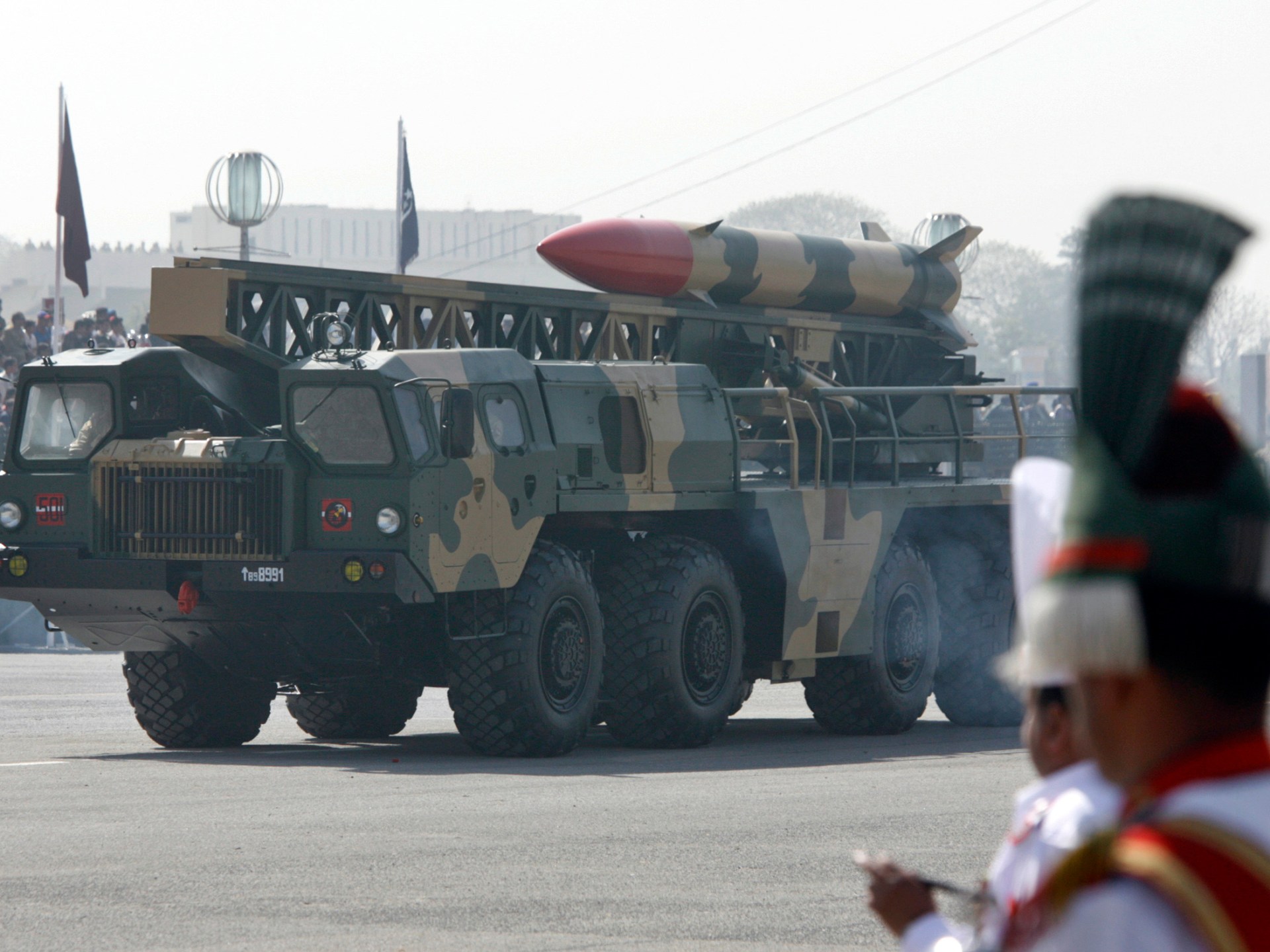
Pakistan said it struck multiple Indian military bases in the early hours of Saturday, May 10, after claiming that India had launched missiles against three Pakistani bases, marking a sharp escalation in their already soaring tensions, as the neighbours edge closer to an all-out war.
Long-simmering hostilities, mostly over the disputed region of Kashmir, erupted into renewed fighting after the deadly April 22 Pahalgam attack in Indian-administered Kashmir that saw 25 tourists and a local guide killed in an armed group attack. India blamed Pakistan for the attack; Islamabad denied any role.
Since then, the nations have engaged in a series of tit-for-tat moves that began with diplomatic steps but have rapidly turned into aerial military confrontation.
As both sides escalate shelling and missile attacks and seem on the road to a full-scale battle, an unprecedented reality stares not just at the 1.6 billion people of India and Pakistan but at the world: An all-out war between them would be the first ever between two nuclear-armed nations.
“It would be stupid for either side to launch a nuclear attack on the other … It is way short of probable that nuclear weapons are used, but that does not mean it’s impossible,” Dan Smith, director of the Stockholm International Peace Research Institute, told Al Jazeera.
So, how did we get here? What are the nuclear arsenals of India and Pakistan like? And when – according to them – might they use nuclear weapons?
How tensions have spiralled since April 22
India has long accused The Resistance Front (TRF) – the armed group that initially claimed credit for the Pahalgam attack, before then distancing itself from the killings – of being a proxy for the Lashkar-e-Taiba, a Pakistan-based armed group that has repeatedly targeted India, including in the 2008 Mumbai attacks that left more than 160 people dead.
New Delhi blamed Islamabad for the Pahalgam attack. Pakistan denied any role.
India withdrew from a bilateral pact on water sharing, and both sides scaled back diplomatic missions and expelled each other’s citizens. Pakistan also threatened to walk out of other bilateral pacts, including the 1972 Simla Agreement that bound the neighbours to a ceasefire line in disputed Kashmir, known as the Line of Control (LoC).
But on May 7, India launched a wave of missile attacks against sites in Pakistan and Pakistan-administered Kashmir. It claimed it hit “terrorist infrastructure”, but Pakistan says at least 31 civilians, including two children, were killed.
On May 8, India launched drones into Pakistani airspace, reaching the country’s major cities. India claimed it was retaliating, and that Pakistan had fired missiles and drones at it. Then, for two nights in a row, cities in India and Indian-administered Kashmir reported explosions that New Delhi claimed were the result of attempted Pakistani attacks that were thwarted.
Pakistan denied sending missiles and drones into India on May 8 and May 9 – but that changed in the early hours of May 10, when Pakistan first claimed that India targeted three of its bases with missiles. Soon after, Pakistan claimed it struck at least seven Indian bases. India has not yet responded either to Pakistan’s claims that Indian bases were hit or to Islamabad’s allegation that New Delhi launched missiles at its military installations.

How many nuclear warheads do India and Pakistan have?
India first conducted nuclear tests in May 1974 before subsequent tests in May 1998, after which it declared itself a nuclear weapons state. Within days, Pakistan launched a series of six nuclear tests and officially became a nuclear-armed state, too.
Each side has since raced to build arms and nuclear stockpiles bigger than the other, a project that has cost them billions of dollars.
India is currently estimated to have more than 180 nuclear warheads. It has developed longer-range missiles and mobile land-based missiles capable of delivering them, and is working with Russia to build ship and submarine missiles, according to the Center for Strategic and International Studies (CSIS).
Pakistan’s arsenal, meanwhile, consists of more than 170 warheads. The country enjoys technological support from its regional ally, China, and its stockpile includes primarily mobile short- and medium-range ballistic missiles, with enough range to hit just inside India.

What’s India’s nuclear policy?
India’s interest in nuclear power was initially sparked and expanded under its first prime minister, Jawaharlal Nehru, who was eager to use it to boost energy generation. However, in recent decades, the country has solidified its nuclear power status to deter its neighbours, China and Pakistan, over territorial disputes.
New Delhi’s first and only nuclear doctrine was published in 2003 and has not been formally revised. The architect of that doctrine, the late strategic analyst K Subrahmanyam, was the father of India’s current foreign minister, S Jaishankar.
Only the prime minister, as head of the political council of the Nuclear Command Authority, can authorise a nuclear strike. India’s nuclear doctrine is built around four principles:
No First Use (NFU): This principle means that India will not be the first to launch nuclear attacks on its enemies. It will only retaliate with nuclear weapons if it is first hit in a nuclear attack. India’s doctrine says it can launch retaliation against attacks committed on Indian soil or if nuclear weapons are used against its forces on foreign territory. India also commits to not using nuclear weapons against non-nuclear states.
Credible Minimum Deterrence: India’s nuclear posture is centred around deterrence – that is, its nuclear arsenal is meant primarily to discourage other countries from launching a nuclear attack on the country. India maintains that its nuclear arsenal is insurance against such attacks. It’s one of the reasons why New Delhi is not a signatory to the Nuclear Non-Proliferation Treaty (NPT), as it maintains that all countries uniformly disarm before it does the same.
Massive Retaliation: India’s retaliation to a first-strike from an aggressor will be calculated to inflict such destruction and damage that the enemy’s military capabilities will be annihilated.
Exceptions for biological or chemical weapons: As an exception to NFU, India will use nuclear weapons against any state that targets the country or its military forces abroad with biological or chemical weapons, according to the doctrine.
What is Pakistan’s nuclear policy?
Strategic Ambiguity: Pakistan has never officially released a comprehensive policy statement on its nuclear weapons use, giving it the flexibility to potentially deploy nuclear weapons at any stage of a conflict, as it has threatened to do in the past. Experts widely believe that from the outset, Islamabad’s non-transparency was strategic and meant to act as a deterrence to India’s superior conventional military strength, rather than to India’s nuclear power alone.
The Four Triggers: However, in 2001, Lieutenant General (Retd) Khalid Ahmed Kidwai, regarded as a pivotal strategist involved in Pakistan’s nuclear policy, and an adviser to the nuclear command agency, laid out four broad “red lines” or triggers that could result in a nuclear weapon deployment. They are:
Spatial threshold – Any loss of large parts of Pakistani territory could warrant a response. This also forms the root of its conflict with India.
Military threshold – Destruction or targeting of a large number of its air or land forces could be a trigger.
Economic threshold – Actions by aggressors that might have a choking effect on Pakistan’s economy.
Political threshold – Actions that lead to political destabilisation or large-scale internal disharmony.
However, Pakistan has never spelled out just how large the loss of territory of its armed forces needs to be for these triggers to be set off.
Has India’s nuclear posture changed?
Although India’s official doctrine has remained the same, Indian politicians have in recent years implied that a more ambiguous posture regarding the No First Use policy might be in the works, presumably to match Pakistan’s stance.
In 2016, India’s then-Defence Minister Manohar Parrikar questioned if India needed to continue binding itself to NFU. In 2019, the present Defence Minister Rajnath Singh said that India had so far strictly adhered to the NFU policy, but that changing situations could affect that.
“What happens in the future depends on the circumstances,” Singh had said.
India adopting this strategy might be seen as proportional, but some experts note that strategic ambiguity is a double-edged sword.
“The lack of knowledge of an adversary’s red lines could lead to lines inadvertently being crossed, but it could also restrain a country from engaging in actions that may trigger a nuclear response,” expert Lora Saalman notes in a commentary for the Stockholm International Peace Research Institute (SIPRI).
Has Pakistan’s nuclear posture changed?
Pakistan has moved from an ambiguous policy of not spelling out a doctrine to a more vocal “No NFU” policy in recent years.
In May 2024, Kidwai, the nuclear command agency adviser, said during a seminar that Islamabad “does not have a No First Use policy”.
As significantly, Pakistan has, since 2011, developed a series of so-called tactical nuclear weapons. TNWs are short-range nuclear weapons designed for more contained strikes and are meant to be used on the battlefield against an opposing army without causing widespread destruction.
In 2015, then-Foreign Secretary Aizaz Chaudhry confirmed that TNWs could be used in a potential future conflict with India.
In reality, however, experts warn that these warheads, too, can have explosive yields of up to 300 kilotonnes, or 20 times that of the bomb that destroyed Hiroshima. Not only could such explosions be disastrous, but some experts say that they might well affect Pakistan’s own border populations.
Conflict Zones
Gunmen kill 30 during ‘vicious’ attack in southeast Nigeria: Rights group | Gun Violence News
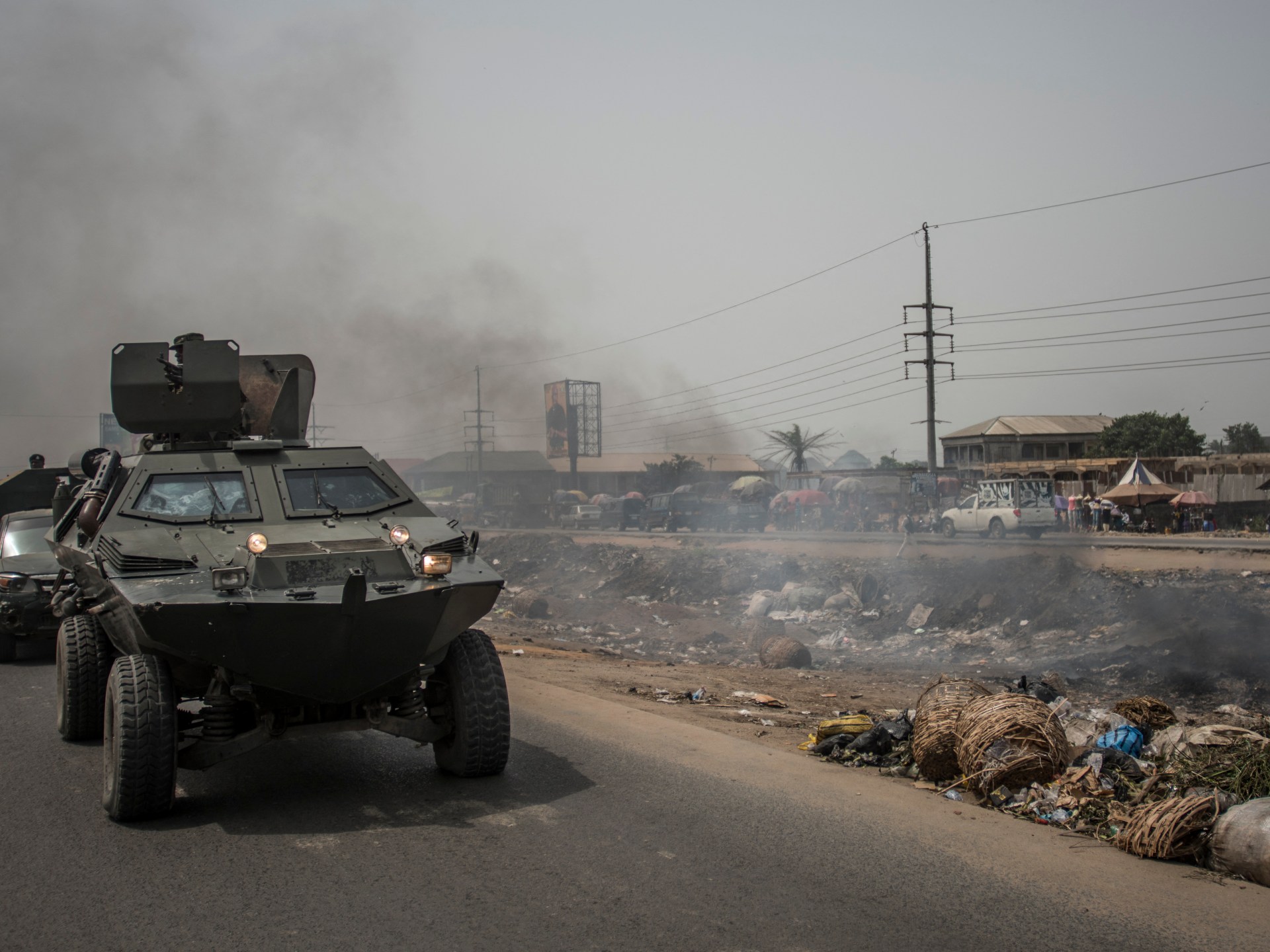
Attack in Imo State ‘shows callous disregard for the sanctity of life’, rights group Amnesty International says.
At least 30 people were killed when gunmen attacked travellers in Nigeria’s southeastern Imo State, according to Amnesty International.
The human rights NGO reported on Friday that more than 20 commuter vehicles and trucks were set ablaze during a “vicious attack” along the Okigwe-Owerri road the day before.
The attackers are suspected of being members of the banned separatist group, Indigenous People of Biafra (IPOB), Amnesty said.
“The attack … shows callous disregard for the sanctity of life. The gunmen blocked Okigwe-Owerri highway and areas of Umuna in Onuimo LGA unleashed violence in an utter show of impunity,” Amnesty wrote on X.
“The Nigerian authorities must immediately and transparently investigate this attack and ensure that the actual perpetrators are brought to justice. International law requires the Nigerian government to promptly investigate unlawful killings to bring perpetrators to justice,” it added.
Amnesty International strongly condemns the vicious attack on travelers yesterday 8 May 2025, along Okigwe-Owerri Road in Imo State, killing at least 30 people and burning over 20 commuter vehicles and trucks.
— Amnesty International Nigeria (@AmnestyNigeria) May 9, 2025
Imo police spokesperson, Henry Okoye, confirmed that the attack took place in the early hours of Thursday, but declined to comment on the death toll.
On Friday, Okoye told the Reuters news agency that one of the assailants had been killed by the police.
According to a police statement, the gunmen, operating in three groups, blocked the highway at 04:00 GMT and shot sporadically.
“A full-scale search and cordon operation is currently underway, with security operatives combing nearby forests and surrounding areas where the suspects are believed to be hiding,” the police said.
Nigeria’s Premium Times also reported that the police commissioner of Imo State, Aboki Danjuma, led a joint tactical team of security operatives to the scene.
According to Danjuma, the joint security team comprised personnel from Nigeria’s army, the police, and the State Security Service.
The IPOB, which the Nigerian government has classed as an outlawed organisation, has been campaigning for the secession of southeastern Nigeria, where the majority of people belong to the Igbo ethnic group.
Following the late 1960s civil war that engulfed the Biafra region, killing more than one million people, separatist groups have continued to push for an independent state from the southeast and in some parts of the south of Nigeria.
Conflict Zones
Israel intercepts missile launched by Yemen’s Houthis | Houthis News
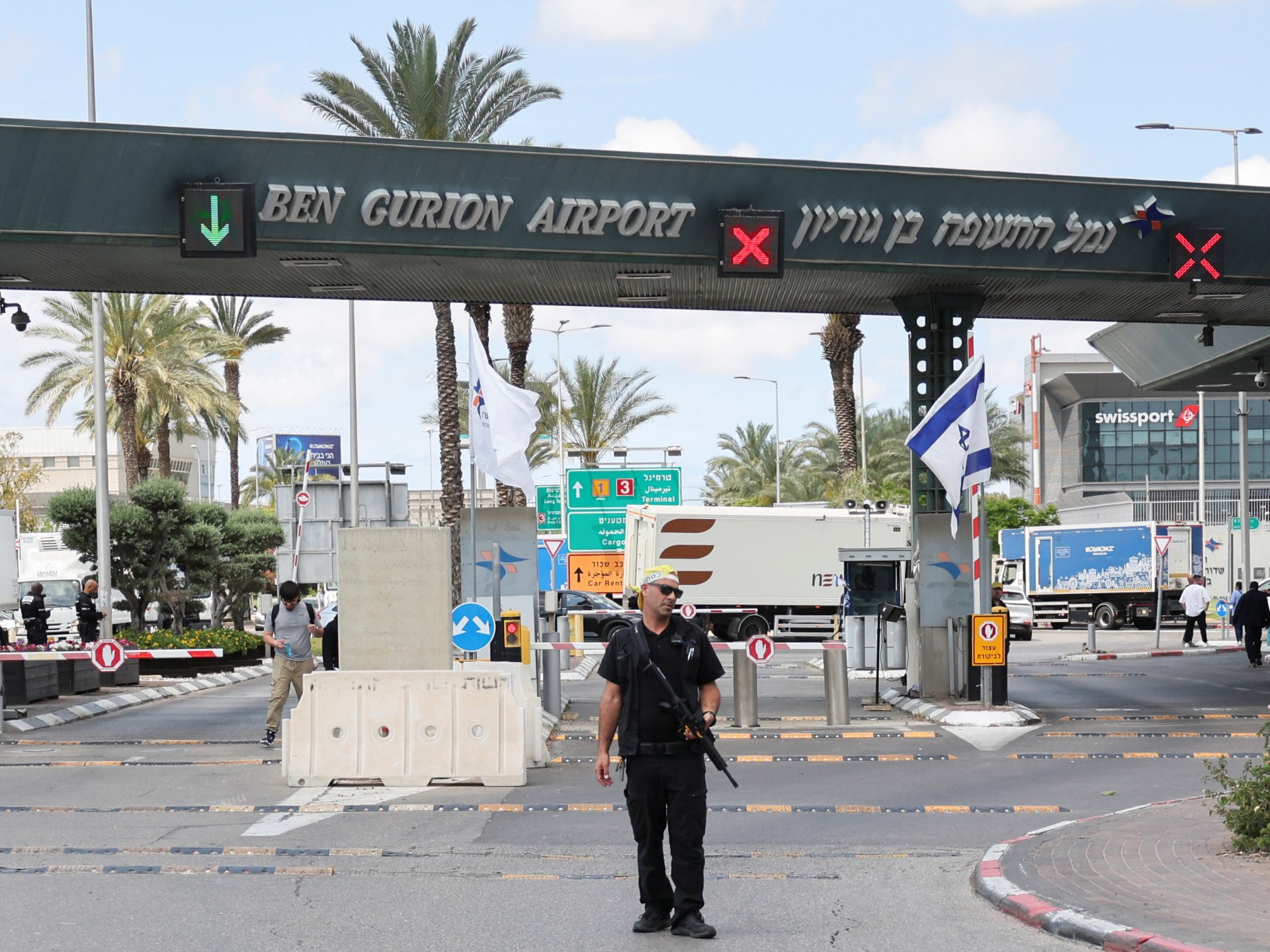
The incident comes days after Oman said it mediated a ceasefire deal between the US and the Houthi group.
Air raid sirens were heard in Israel as a missile was launched towards the territory by Yemen’s Houthis, who say they are retaliating against Israeli sites in solidarity with Palestinians in Gaza.
Israel’s military said it intercepted the projectile on Friday using its air defence systems.
The incident came days after Oman said it mediated a ceasefire deal between the United States and the Houthis, with the Yemeni group saying the agreement did not include Israel.
Houthi rebels fired a “hypersonic ballistic missile” towards Ben Gurion airport near Tel Aviv, while also claiming a drone attack “targeting a vital Israeli enemy target” in the same area, according to the group’s military spokesperson, Yahya Saree.
Israeli media reported that air raid sirens were sounded in several areas across central Israel, with people receiving early warning mobile messages about the missile attack.
Israeli Defence Minister Israel Katz said that Israel would respond forcefully in Yemen and “wherever necessary”, describing the Houthi missiles as “Iranian”.
There were no reports of injuries or damage from the missile attack, according to a military statement.
US President Donald Trump announced on Tuesday that his country would stop bombing Yemen as the Houthis had agreed to stop their attacks on US ships in the Red Sea.
But the Houthis have continued to fire missiles and drones towards Israel, most of which the Israeli military says it has intercepted, without casualties or serious damage occurring.
The Houthis have attacked numerous vessels in the Red Sea linked to Israel and its allies in what they state is an act of solidarity with Palestine.
According to Israeli media, the Houthi group has launched 28 ballistic missiles and dozens of drones at Israel since March 18, when Israel resumed its genocidal war on Gaza.
Israel has been waging a devastating war on the enclave since October 2023, killing more than 50,000 Palestinians, after a Hamas-led attack into southern Israel that month.
Conflict Zones
Who are the armed groups India accuses Pakistan of backing? | Armed Groups News
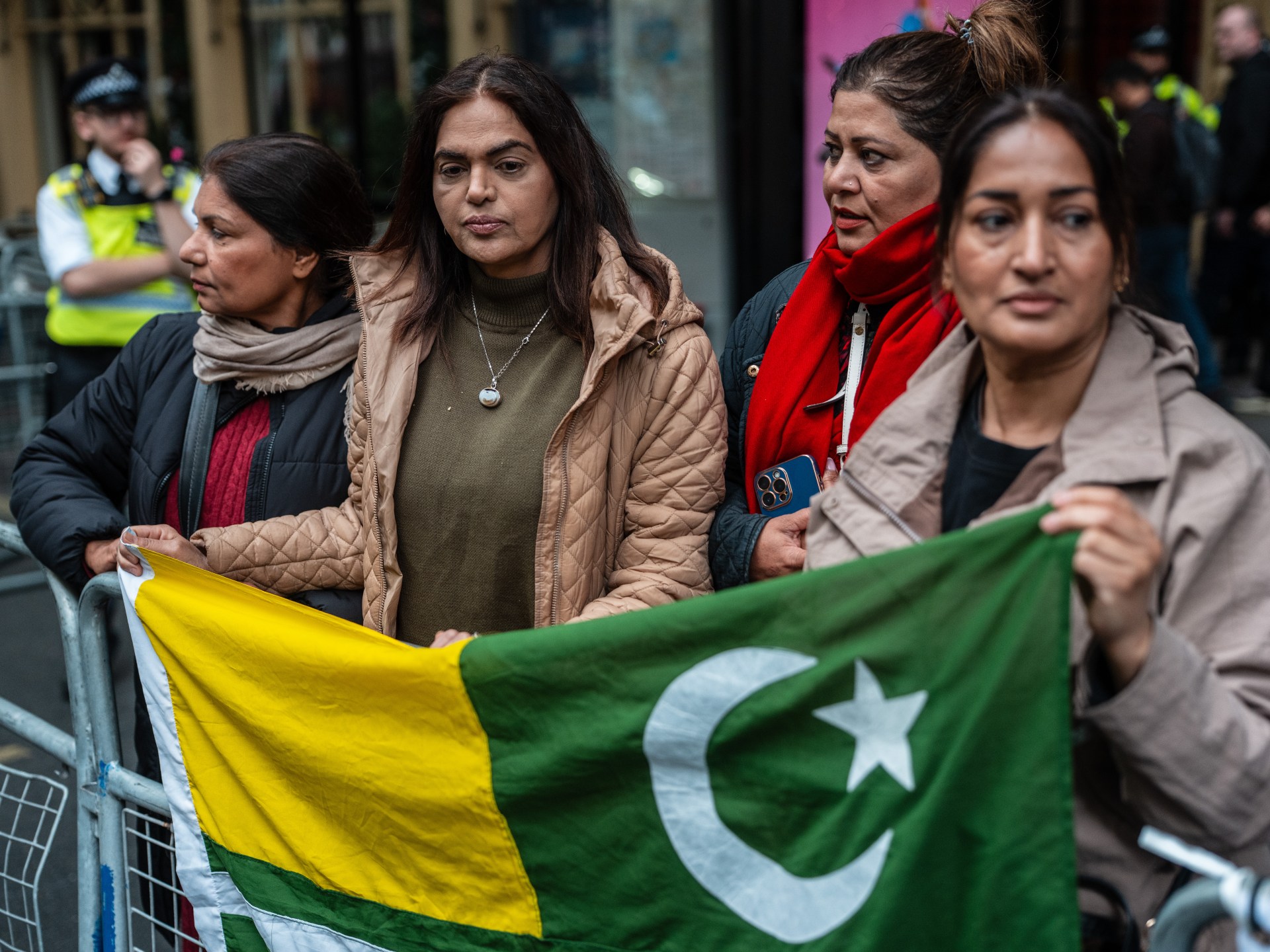
Tensions are higher between India and Pakistan than they have been in decades as the two countries trade blame for drone attacks on each other’s territory over the past few days. At the heart of the dispute is what India claims is Pakistan’s support for armed separatist groups operating in Kashmir, a region disputed between the two countries.
An armed group called The Resistance Front (TRF) claimed responsibility for the Pahalgam attack in Indian-administered Kashmir last month in which 26 people were killed. India alleges that TRF is an offshoot of another Pakistan-based armed group, Lashkar-e-Taiba (LeT) and has blamed Pakistan for supporting such groups.
Pakistan has denied this. It condemned the attack in April and called for an independent investigation.
Here is more about who the armed groups are and the major attacks they’ve claimed or been blamed for.
The TRF emerged in 2019 following the Indian government’s suspension of Article 370 of the Indian Constitution, stripping Indian-administered Kashmir of its semi-autonomous status.
However, the group was not widely known before the Pahalgam attack, which it took responsibility for in April via the Telegram messaging app, on which it said it was opposed to the granting of residency permits to “outsiders”.
Since the repeal of Article 370, non-Kashmiris have been granted residency permits to settle in Indian-administered Kashmir. This has stoked fears that the Indian government is trying to change the demographics of Kashmir, whose population is nearly all Muslim.
Unlike other armed rebel groups in Kashmir, the TRF does not have an Islamic name.
However, the Indian government maintains that it is an offshoot of, or a front for, Lashkar-e-Taiba (LeT), a Pakistan-based armed group whose name means “Army of the Pure”.
In 2020, TRF started claiming responsibility for minor attacks, including some targeted killings. TRF recruits included rebels from different splinter rebel groups. Indian security agents say they have arrested multiple TRF members since then.
According to Indian government records, most armed fighters killed in gunfights in Kashmir were affiliated with the TRF in 2022.
The LeT, which calls for the “liberation” of Indian-administered Kashmir, was founded around 1990 by Hafiz Muhammad Saeed, who is also known as Hafiz Saeed.
In 2008, armed gunmen opened fire on civilians at several sites in Mumbai, India, killing 166 people. Ajmal Kasab, the only attacker captured alive, said the attackers were members of LeT. Saeed denied any involvement in that attack, however. Kasab was executed by India in 2012.
India also blamed Pakistani intelligence agencies for the attack. While Pakistan conceded that the attack may have been partly planned on Pakistani soil, it maintained that its government and intelligence agencies were not involved.
According to the United Nations, LeT was also involved in a 2001 attack on India’s parliament and a 2006 attack on Mumbai commuter trains that killed 189 people.
On May 7, India launched missile attacks on several cities in Pakistan and Pakistan-administered Kashmir. One of these cities was Muridke in the Punjab province. India claims that Muridke was the location of the headquarters of the Jamat-ud-Dawa, a charity organisation that New Delhi insists is a front for the LeT.
Last week, the Indian army claimed it had struck LeT’s Markaz Taiba camp in Muridke. The army also claimed Kasab had been trained at this camp.
Pakistan says LeT has been banned, however. Following an attack on Indian-administered Kashmir’s Pulwama in 2019, Pakistan also reimposed a lapsed ban on Jamat-ud-Dawa. Saeed was arrested in 2019 and is in the custody of the Pakistani government, serving a 31-year prison sentence after being convicted in two “terror financing” cases.
Jaish-e-Muhammad (JeM), or “The Army of Muhammad”, was formed around 2000 by Masood Azhar, who had been released from Indian prison in 1999.
Azhar, who had been arrested on “terrorism” charges, was released in exchange for 155 hostages being held by hijackers of an Indian Airlines plane.
Azhar previously fought under the banner of a group called Harkat-ul-Mujahideen, which calls for Kashmir to be united with Pakistan, and has been linked to al-Qaeda.
According to the UN Security Council, JeM has also had links with al-Qaeda, Osama bin Laden and the Taliban.
Pakistan banned JeM in 2002 after the group, alongside LeT, was blamed for an attack on the Indian parliament in 2001.
The British-born Ahmed Omar Saeed Sheikh, who was convicted of killing US journalist Daniel Pearl in 2002, was also a member of JeM. Pearl was the Wall Street Journal’s South Asia bureau chief. However, a 2011 report released by the Pearl Project at Georgetown University following its own investigation claimed that Pearl had not been murdered by Sheikh. The report instead alleged that Khalid Sheikh Mohammed, the mastermind behind the September 11, 2001 attacks, was responsible. In 2021, a panel of three judges at Pakistan’s Supreme Court ordered Sheikh’s release.
Despite the ban, Indian authorities claim the group continues to operate in Bahawalpur, in Pakistan’s Punjab province. On May 7, the Indian army claimed its strikes had also targeted the headquarters of JeM there.
In 2019, JeM claimed a suicide bomb attack that killed 40 Indian paramilitary soldiers in Pulwama in Indian-administered Kashmir.
Azhar has been arrested by Pakistani authorities twice, but was released and has never been charged. He has since disappeared from the public eye and his current whereabouts are not known.
Hizbul-ul-Mujahideen
Hizbul-ul-Mujahideen (HuM), or “Party of Holy Fighters” was formed in 1989 by Kashmiri separatist leader Muhammad Ahsan Dar.
The group emerged out of the 1988 protests in Kashmir against the Indian government. The group, also called Hizb, has become the largest Indigenous rebel group based in Indian-administered Kashmir.
Rather than calling for independence, HuM calls for the whole of Kashmir to be allowed to accede to Pakistan.
The group has a huge network of fighters in Shopian, Kulgam and Pulwama districts in the south of Indian-administered Kashmir.
In 2016, the killing of popular HuM commander Burhan Wani triggered widespread protests in Indian-administered Kashmir, resulting in a crackdown by Indian security forces.
The following year, the US designated HuM as a “foreign terrorist organisation” and placed sanctions on the group.
HuM leader Riyaz Naikoo spoke to Al Jazeera in 2018. “It is the nature of the occupying Indian state that has compelled us to resort to violent methods of resistance,” he said.
When asked what the group’s demands were, Naikoo said: “Our demand is very simple – freedom. Freedom, for us, means the complete dismantling of India’s illegal occupation of Kashmir and all the structures that support it, be they military or economic.”
He added that the group considers Pakistan an “ideological and moral friend” because “Pakistan is the only country which has consistently supported our cause and raised the concerns of Kashmiri freedom struggle at international forums”.
-

 Lifestyle2 days ago
Lifestyle2 days agoWorld Video Game Hall of Fame inducts Defender, Tamagotchi, GoldenEye 007 and Quake
-

 Europe2 days ago
Europe2 days agoThe Bank of England cuts interest rates as tariffs endanger global economic growth
-
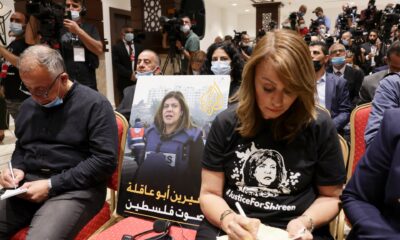
 Middle East2 days ago
Middle East2 days agoDocumentary sheds light on Biden’s reactions to Shireen Abu Akleh’s killing | Occupied West Bank News
-
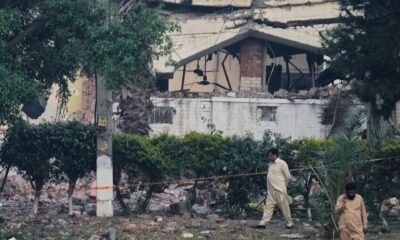
 Conflict Zones2 days ago
Conflict Zones2 days ago‘No deterrent value’: Will India’s strikes on Pakistan stop armed attacks? | India-Pakistan Tensions News
-
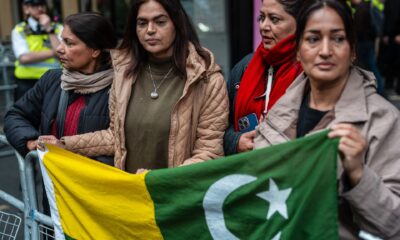
 Conflict Zones17 hours ago
Conflict Zones17 hours agoWho are the armed groups India accuses Pakistan of backing? | Armed Groups News
-
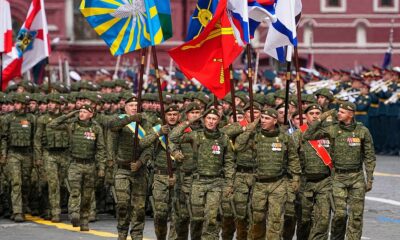
 Africa19 hours ago
Africa19 hours agoRussia stages massive victory day parade, Putin hails troops in Ukraine as foreign leaders attend
-
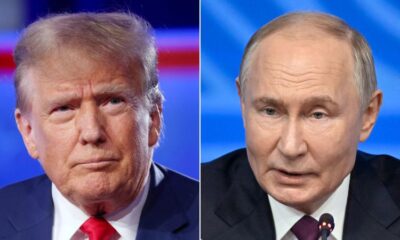
 Europe20 hours ago
Europe20 hours agoUkraine’s Western allies pile pressure on Putin, threatening sanctions if he refuses 30-day truce
-

 Lifestyle20 hours ago
Lifestyle20 hours agoTwo dolls instead of 30? Toys become the latest symbol of Trump’s trade war




